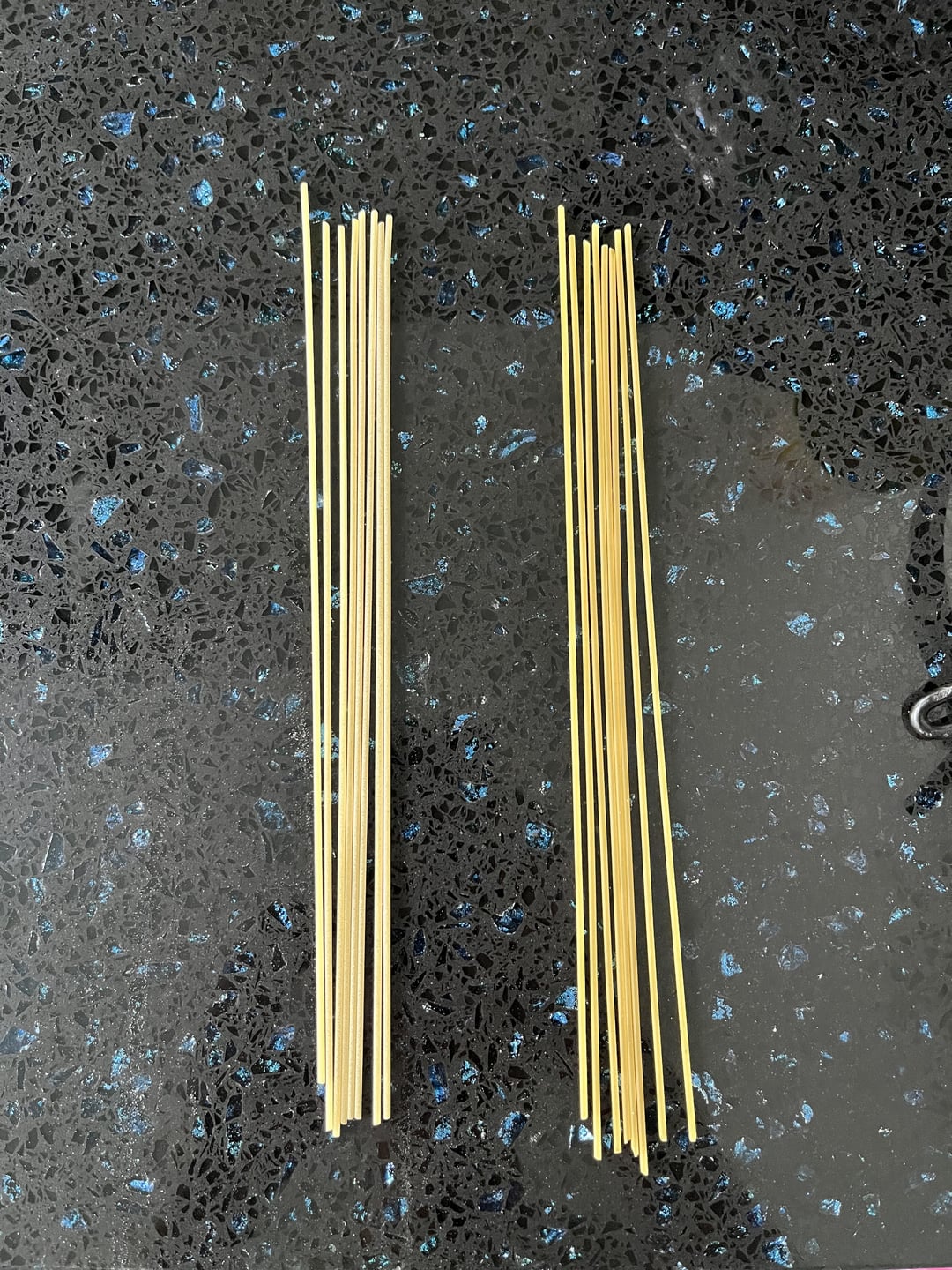

Dear fellow Pasta lovers,
Of all the pasta brands I have tried, there seems to be two different textures of the same kind of spaghetti.
Barilla and Agnesi usually resemble the one on the right, it has a smooth surface and usually look more yellow. The texture is more firm.
While Liguori and Di Martino Dolce & Gabbana one is more on the left, it has a rough surface with flour on it, and the texture taste more airy.
Anyone knows what’s the difference between these two? Is there a major difference in quality? Or it’s simply made with difference methods or for different purposes? Like the sauce can stick with the rough one more?
Thank you!!
by lilpak


9 Comments
They are both semolina pasta. Diference is in the drying proces. Faster they dry crappier/cheaper they are. They say more yellow the pasta is, crappier it is. That doesn’t count for egg pasta.
About the surface, the left one was made with bronze die. Surface is rough, sauce stick to it more. Delicious.
The pasta on the left is Al Bronzo, meaning it was extruded using a bronze die making the surface more rough. This gives more surface area which helps with carrying sauces and it can also produce starchier pasta water which can be used to thicken or smoothen sauces.
The pasta on the right was most likely extruded using a teflon die which makes it much smoother. This usually means less surface area which means the opposite of most things Al Bronzo provides as a benefit.
In the end it comes down to your own preference, but typically pasta textured like the spaghetti on the left is higher quality and more expensive.
Dolce and Gabbana makes spaghetti?
I don’t know the proper linguistic difference, but Italians don’t like the yellow one. Also opt for the pasta with the higher protein it’s more authentic.
I suppose the one with the rugged texture is die cut with bronze dies (trafilata al bronzo)
I found a video that explain it!
https://youtu.be/AS_12ankZfg?si=u4qSjr5tbBkl3ysq
I extrude about 10-15 hours every week and to me, it looks like the one on the right has been dried at a higher temperature. If you go low and slow, it looks more like the pasta on the left. But slower takes longer so it’s more expensive to accomplish and the person paying the bills usually decides to go at a higher temperature so the batch is completed faster.
The type of die used also has an effect on the look. The one on the left is most definitely a 100% bronze die. The one on the right looks like it may have had teflon around the extrusion orifice. Or they could have both been made with 100% bronze but the one on the right has worn down slightly or smoothed out a bit from use.
D&G pasta??? Oh my God… anyway, bronze cast on the left. Nothing wrong with the Barilla style on the right. More appropriate for aglio e olio, vongole and this kind of oil-coated pasta sauces.
One has more Spa, the other more ghetti